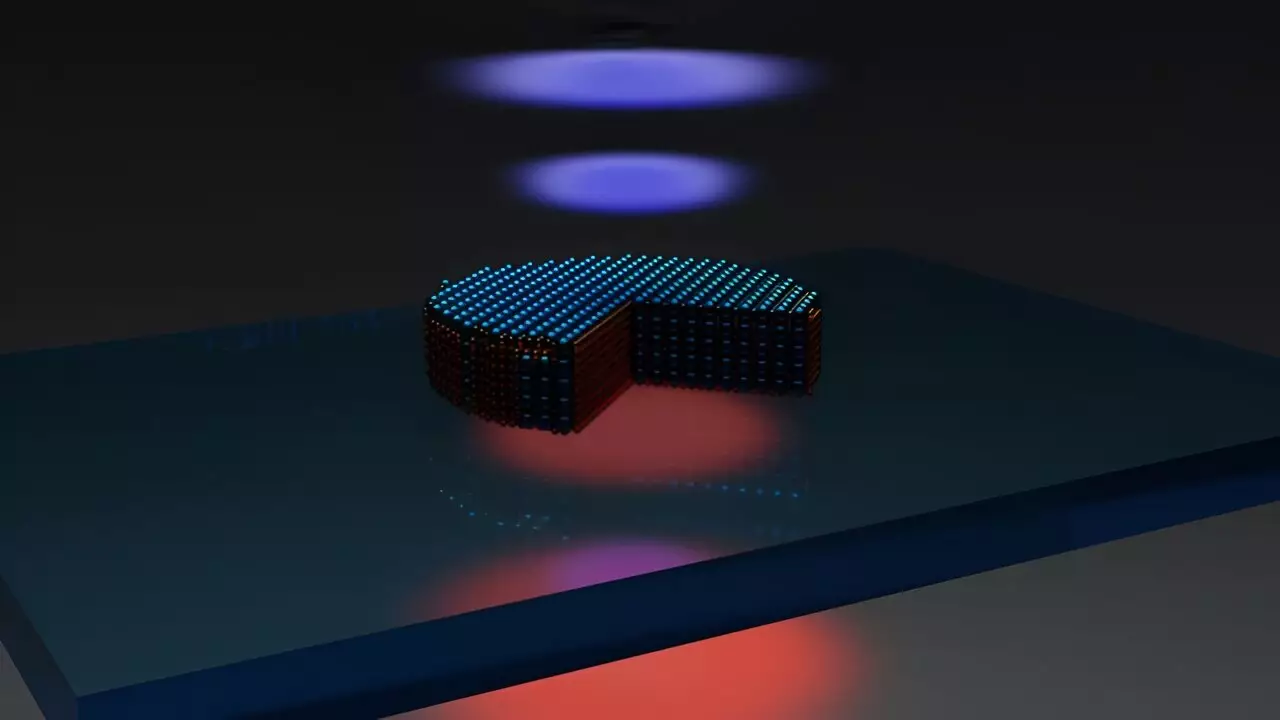Photonics, the science involving the generation, manipulation, and detection of light, has emerged as a cornerstone of modern technology. It plays a crucial role across various sectors, from telecommunications and medical diagnostics to spectroscopy and emerging quantum technologies. The allure of photonics lies in its ability to harness the often-unexplored intricacies of light-matter interactions, leading to innovative applications that redefine conventional boundaries. In recent advancements, a research team from Chalmers University of Technology has made a notable stride by blending two pivotal domains within photonics: nonlinear optics and high-index nanophotonics. This synergistic development unfolds in the form of a disk-like nano-object, propelling the efficiency of light manipulation to unprecedented levels.
Understanding the Breakthrough: The Nano-Disk
At the heart of this breakthrough is a newly fabricated nanodisk composed of molybdenum disulfide (MoS2), a representative of the family of transition metal dichalcogenides (TMDs). This material is particularly intriguing due to its extraordinary optical properties that remain intact, even at room temperature. The nano-disk structure presents dimensions significantly smaller than the wavelength of light itself, raising the possibility of highly efficient frequency conversion. Dr. Georgii Zograf, the project’s lead author, expressed astonishment at their findings, highlighting that this nanodisk outperforms traditional materials by an astounding factor of 10,000 in efficiency. This discovery leads to a clearer understanding of how nano-structuring can significantly amplify photonic efficiencies, indicating a promising route for future developments in the field.
The choice of molybdenum disulfide stems from its high refractive index—approximately 4.5 in the visible spectrum—which ensures that light can be compressed significantly within the material, thereby enhancing interaction effects. However, the stacking of TMD layers poses a unique challenge; maintaining their nonlinear characteristics while adhering to crystalline lattice symmetry constraints can drastically affect performance. The researchers at Chalmers achieved an engineering marvel by creating a nanodisk that preserves the unique symmetry properties of molybdenum disulfide, allowing optical nonlinearity to manifest more powerfully than in prior attempts. This accomplishment suggests that the efficacy of such nanostructures can be not only maintained but also augmented, ushering in a new era in photonic design.
The Mechanics of Second-Harmonic Generation
One of the most vital functions of the newly developed nanodisk is its capability for second-harmonic generation (SHG). SHG represents a nonlinear optical phenomenon where light of one frequency is converted to another frequency, essentially doubling its original frequency. This process holds particular significance in high-energy laser systems, where efficiency and compactness are paramount. The researchers’ achievement combines the extreme nonlinearity associated with SHG with a high-refractive-index medium, leading to significant advancements in structured laser technology. Unlike traditional systems measuring in centimeters, this innovation operates at a scale of about 50 nanometers—an impressive reduction that can redefine photonic device architecture.
The implications of this research are manifold. The nanodisk’s unique features hint at potential applications in advanced optical circuits, promising a new direction in the realm of integrated photonics. The capacity for miniaturization could revolutionize the way we approach nonlinear optics, paving the way for compact devices capable of generating entangled photon pairs or performing high-resolution spectroscopy. As Professor Timur Shegai pointed out, while this research signifies only an initial step, it lays the foundation for a broad spectrum of experimental possibilities in both quantum and classical domains.
In summation, the development of this ultrafine nanodisk illustrates just how the combination of advanced materials science and nanotechnology can lead to substantial progress in photonics. By pushing the frontiers of light manipulation with unprecedented efficiency, this research does not merely present an achievement; it opens avenues for future exploration that could benefit both academic research and various industries. The fusion of enhanced nonlinear optical properties with compact dimensions challenges conventional designs, paving the way for a future where photonic devices can facilitate breakthroughs across numerous fields. As researchers continue to explore the vast potential of such innovations, the sensations of excitement and discovery remain palpable, indicating that the journey into the world of nanophotonics has only just begun.


Leave a Reply